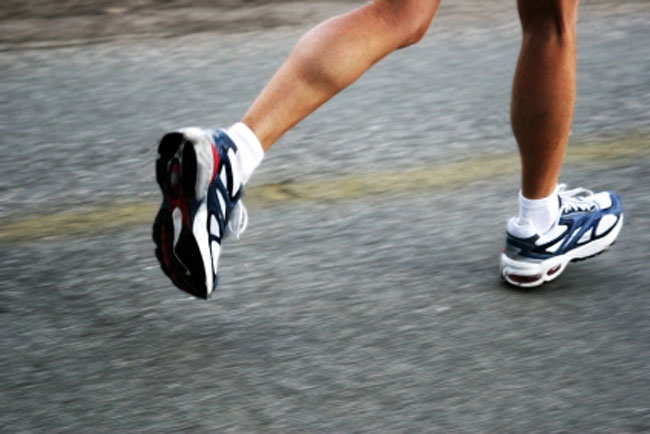Humans Could Run 40 mph, in Theory

Humans could perhaps run as fast 40 mph, a new study suggests. Such a feat would leave in the dust the world's fastest runner, Usain Bolt, who has clocked nearly 28 mph in the 100-meter sprint.
The new findings come after researchers took a new look at the factors that limit human speed. Their conclusions? The top speed humans could reach may come down to how quickly muscles in the body can move.
Previous studies have suggested the main hindrance to speed is that our limbs can only take a certain amount of force when they strike the ground. This may not be the whole story, however.
"If one considers that elite sprinters can apply peak forces of 800 to 1,000 pounds with a single limb during each sprinting step, it's easy to believe that runners are probably operating at or near the force limits of their muscles and limbs," said Peter Weyand of Southern Methodist University, one of the study's authors.
But Weyand and colleagues found in treadmill tests that our limbs can handle a lot more force than what is applied during top-speed running.
What really holds us back
Their results showed the critical biological limit is imposed by time — specifically, the very brief periods of time available to apply force to the ground while sprinting. In elite sprinters, foot-ground contact times are less than one-tenth of a second, and peak ground forces occur within less than one-twentieth of that second for the first instant of foot-ground contact.
Get the world’s most fascinating discoveries delivered straight to your inbox.
To figure out what limits how fast we can run, the researchers used a high-speed treadmill equipped to precisely measure the forces applied to its surface with each footfall. Study participants then ran on the treadmill using different gaits, including hopping, and running forward and backwards as fast as they possibly could.
The ground forces applied while hopping on one leg at top speed exceeded those applied during top-speed forward running by 30 percent or more. That suggests our limbs can handle greater forces than those found for two-legged running at top speeds.
And although top backward speed was substantially slower than top forward speed, as expected, the minimum periods of foot-ground contact at top backward and forward speeds were essentially identical. The fact that these two drastically different running styles had such similar intervals for foot-ground contact suggest that there is a physical limit to how fast your muscle fibers can work to get your feet off the ground, the researchers say.
New speed limit
The new work shows that running speed limits are set by the contractile speed limits of the muscle fibers themselves, with fiber contractile speeds setting the limit on how quickly the runner's limb can apply force to the running surface.
"Our simple projections indicate that muscle contractile speeds that would allow for maximal or near-maximal forces would permit running speeds of 35 to 40 miles per hour and conceivably faster," Bundle said.
While 40 mph may not impress the cheetah, the world's fastest land animal reaching speeds of 70 mph (112 kph), it's enough to escape a grizzly bear and much quicker than T. rex, which may have reached 18 mph (29 kph) during a good jog.
The results were published in the Jan. issue of the journal Journal of Applied Physiology.

